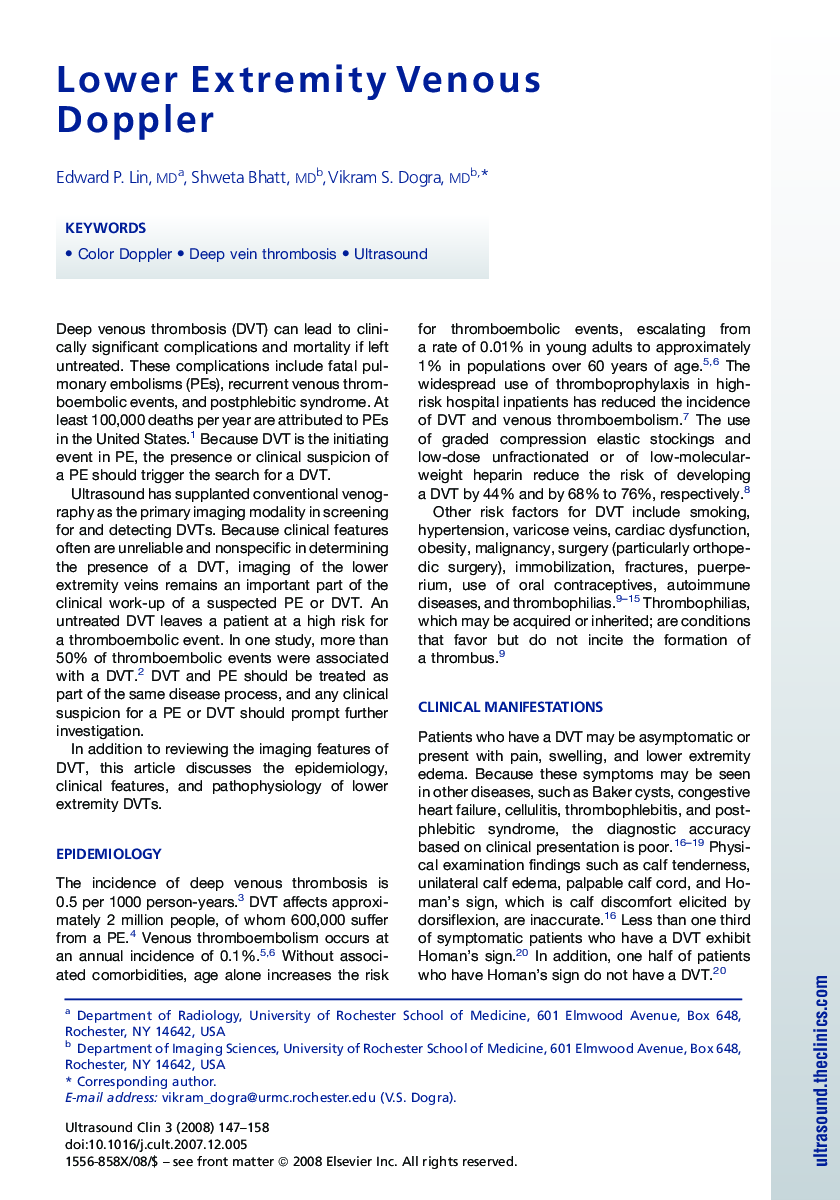| Article ID | Journal | Published Year | Pages | File Type |
|---|---|---|---|---|
| 3842934 | Ultrasound Clinics | 2008 | 12 Pages |
Abstract
Ultrasound has supplanted conventional venography as the primary imaging modality in screening for and detecting deep vein thrombosis (DVT). The examination should include findings of intermittent compression, spontaneous flow, phasicity, augmentation, Valsalva response, and comparison of the contralateral common femoral vein waveform. Venous compression is the most reliable finding in detecting a DVT. With the use of color flow Doppler, sensitivities and specificities approach 95% to 99%. In addition to reviewing the imaging features of DVT, this article discusses the epidemiology, clinical features, and pathophysiology of lower extremity DVTs.
Related Topics
Health Sciences
Medicine and Dentistry
Medicine and Dentistry (General)
Authors
Edward P. MD, Shweta MD, Vikram S. MD,
